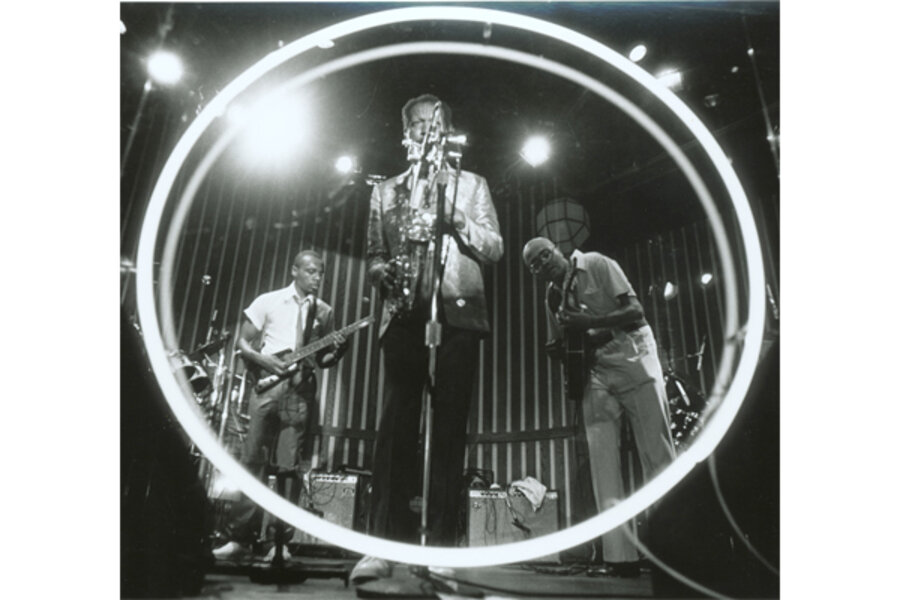Ornette: Made in America: movie review
Loading...
In the early 1980s, producer Kathelin Hoffman was readying a new cultural center in Fort Worth, Texas, and invited native son Ornette Coleman, the controversial, groundbreaking jazz composer and saxophonist, to perform with his band for the opening.
To document the event, Hoffman reached out to Shirley Clarke, the maverick independent filmmaker who had made her reputation two decades earlier with “The Connection” (1960), about heroin junkies, and “The Cool World” (1963), about Harlem street gangs. As it turns out, Clarke had started a film about Coleman in the 1960s.
The fascinating, maddening, one-of-a-kind film resulting from this collaboration, “Ornette: Made in America,” was released in 1986 and soon forgotten. (Clarke died in 1997.) Now it is getting a newly restored theatrical rerelease courtesy of Milestone Films, which will subsequently distribute it as a DVD.
If you’ve never been exposed to Coleman’s music, or to Clarke’s movies, for that matter, “Ornette” may at first encounter seem like a free-form fantasia gone haywire. In no way is this film a traditional documentary; but, given Coleman’s lifelong iconoclasm, this is entirely appropriate. Clarke’s original footage from the ’60s was shot on film, but since that time she had become a leading innovator in experimental video production. “Ornette” attempts to blend not only Coleman’s variegated styles and syncopations but Clarke’s as well. The film is a multimedia extravaganza, with film and video and Super 16 film all working off each other in a way that is, well, jazzy.
Coleman, who is now 82 and still going strong, has been much honored by the arts establishment since this film was made – including with a MacArthur Fellowship and a Pulitzer Prize for his 2006 album “Sound Grammar.” But in 1986 he hadn’t quite achieved establishment respectability. Clarke revels in the collision of cultures in her movie.
Coleman and his sidemen (including his drummer son Denardo) are filmed playing his elegantly dissonant “Skies of America” symphony before a bejewelled swath of Texas high society. The incongruousness quickly comes to seem like the most natural thing in the world. Coleman brings the audience to him without in any way compromising his artist’s integrity.
Clarke had started out in the ’60s making a movie about the relationship between Coleman and young Denardo, and vestiges of that concept remain, along with reenactments of the young Ornette running away from home, interviews with his neighbors and friends from back in the day, footage of Coleman playing in Morocco and Nigeria, clips of interviews from Italian TV in 1980, and much else.
Coleman also offers up his musings on “free jazz,” as his music was called – not entirely with his assent, since he felt this implied his music was structureless. There is indeed an underlying connectivity to his music, if you have ears to hear it. Not entirely surprisingly, he talks at length about his “best hero,” none other than Buckminster Fuller, whom he first heard lecture in 1954 in Hollywood High School and later befriended. Coleman felt that Fuller’s geodesic architecture was “like how I write music.”
He is even invited by NASA to be a kind of artist-in-residence. This prompts Coleman to recap a favorite saying of his from Fuller: “There is no such thing as up or down. Only out.”
This, of course, describes Coleman’s music, and it also captures Clarke’s movie about him. Clarke started out as a dancer studying with Martha Graham, and much of “Ornette” has a dancelike swing and propulsion. What it doesn’t provide is a cogent look at Coleman’s artistry. This is not a jazz film for people who want to sit back and get mellow. The film itself is a species of jazz. It’s offbeat without missing the beat. Grade: B+ (Unrated.)







